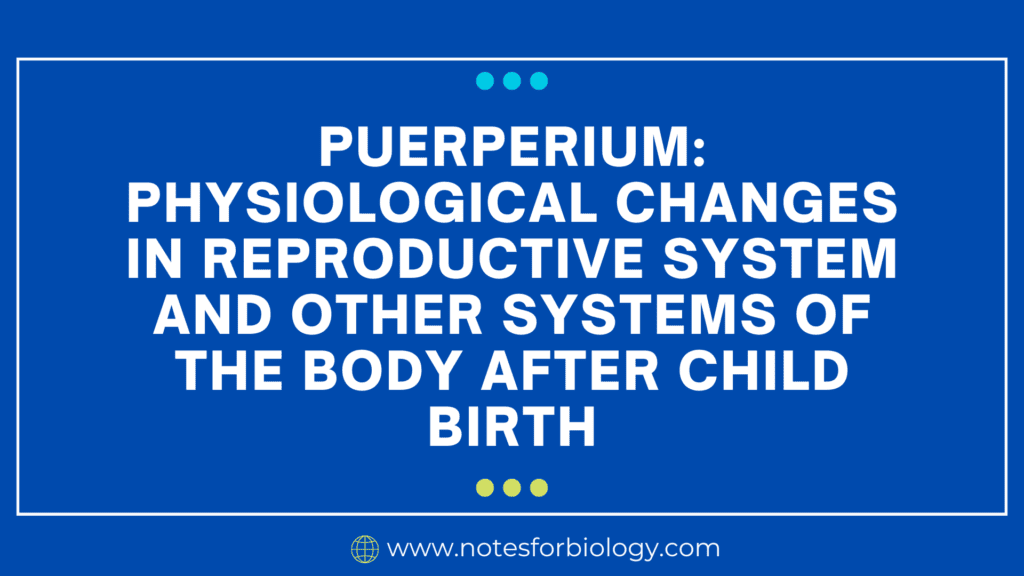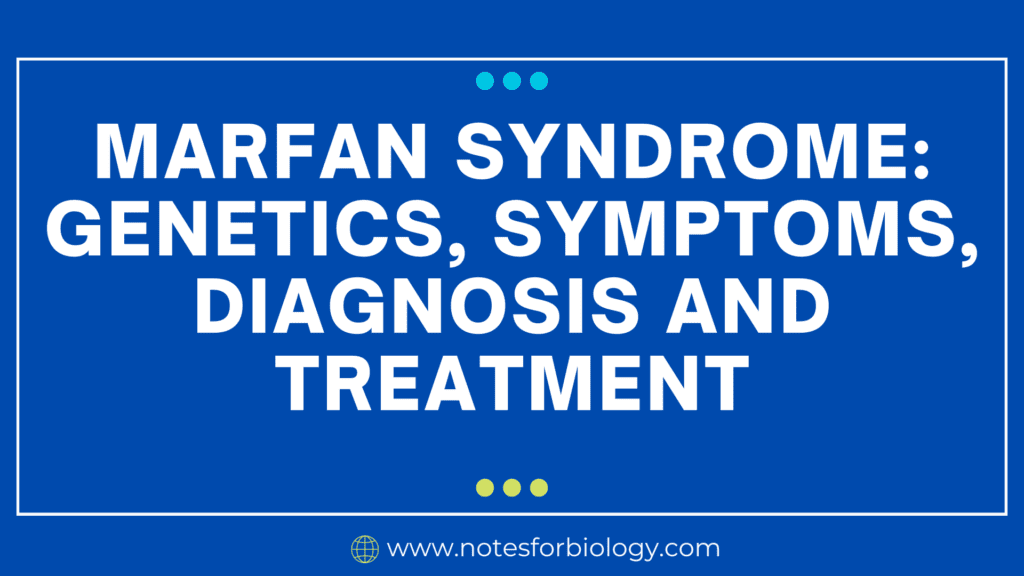Puerperium, or postpartum period, refers to the time after childbirth when the mother’s body undergoes significant physiological changes to revert to a non-pregnant state. This time usually lasts around six weeks. Here are the primary physiological changes in the reproductive and other body systems:
Table of Contents
Puerperium
Puerperium, also known as the postpartum period, is the time following childbirth during which the mother’s body undergoes several physiological changes to return to the non-pregnant state. Puerperium period typically lasts about six weeks but can vary among individuals. These changes affect various systems of the body, particularly the reproductive system
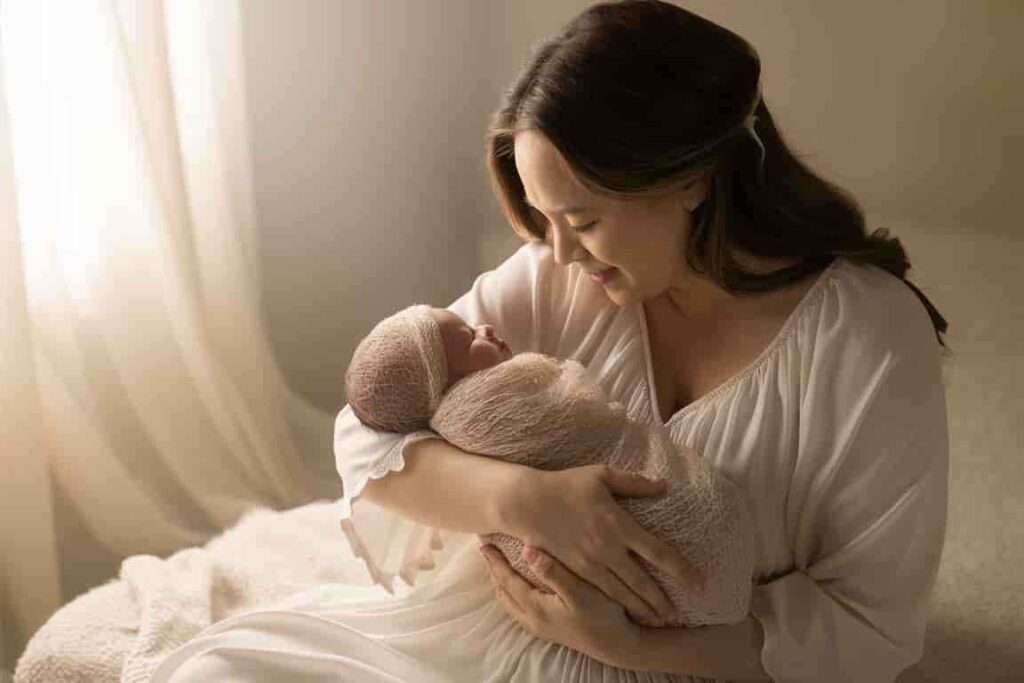
Reproductive System
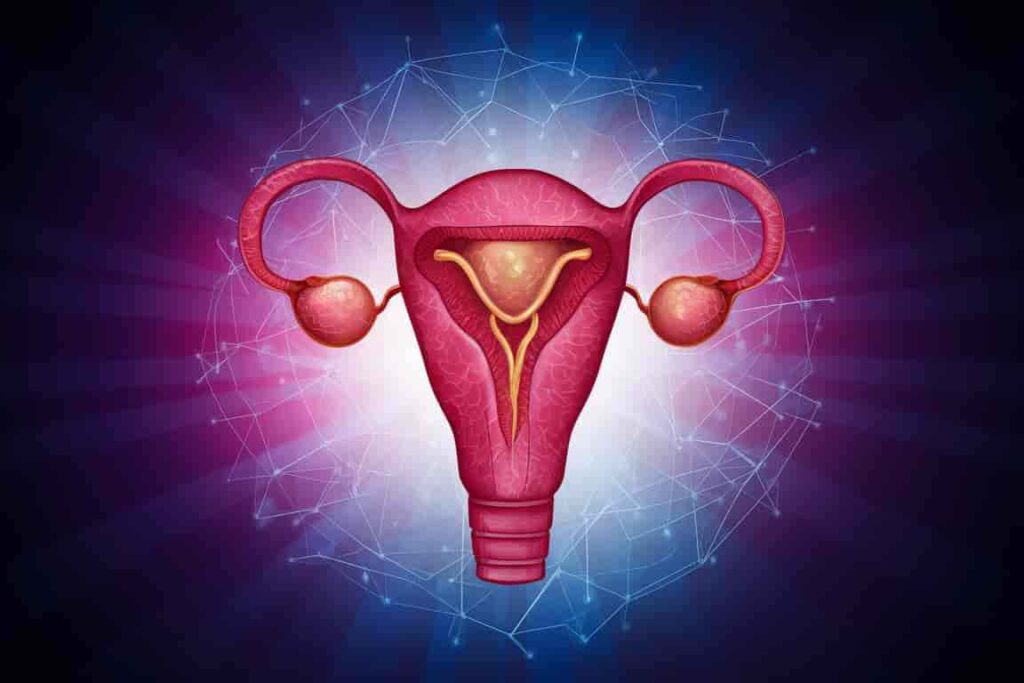
1. Uterus
- Involution occurs when the uterus recovers to its pre-pregnancy size and condition. This entails contraction of uterine muscle fibers and a reduction in the number of myometrial cells.
- Lochia is a vaginal discharge that consists of blood, mucus, and placental debris. It goes through three stages: lochia rubra (red for a few days), lochia serosa (pink or brown for around ten days), and lochia alba (yellowish-white for several weeks).
2. Cervix:
- Over the course of several weeks, the cervix gradually closes and tightens up.
- After delivery, the vaginal tissues may be swollen and strained, but they usually return to normal, albeit more elastic.
3.Vagina and Perineum:
- The vagina gradually shrinks but may not recover to pre-pregnancy dimensions. The vaginal walls regain tone and rugae.
- The perineum heals and rebounds after being stretched or ripped during childbirth, though this can vary depending on the amount of the injury.
4. Ovaries:
- Ovulation can restart as early as three weeks after birth, while it is frequently delayed in breastfeeding mothers due to lactational amenorrhea, a temporary postnatal infertility.
Cardiovascular System
- Blood Volume and Cardiac Output: During pregnancy, blood volume increased but gradually returned to normal. Cardiac output, which had been increased, also returns to pre-pregnancy norms.
- Blood pressure normally returns to normal after labor.
Endocrine System
- Hormonal Changes: After birth, levels of pregnancy hormones such as human chorionic gonadotropin (hCG), estrogen, and progesterone fall considerably.
- Prolactin levels stay high, particularly in breastfeeding women, to increase milk supply.
- Thyroid Function: Some women may have thyroid malfunction after childbirth, known as postpartum thyroiditis.
Urinary System
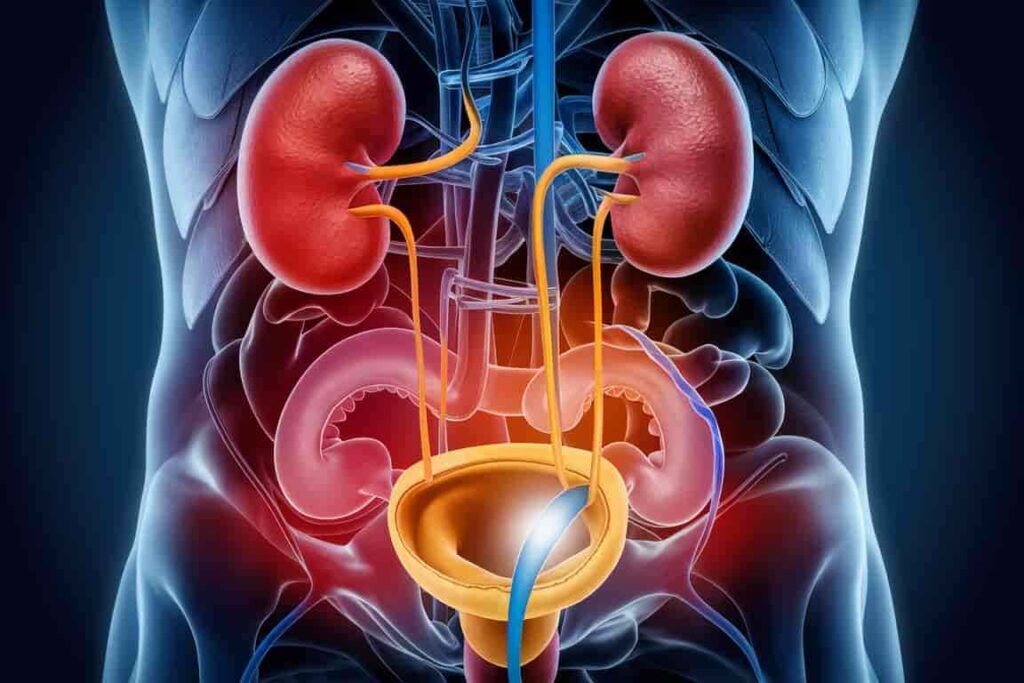
- Bladder Function: Stretching and damage to the bladder and urethra after delivery might cause transient postpartum urine retention or incontinence.
- Diuresis: Increased urination occurs as the body expels extra fluid acquired during pregnancy.
Gastrointestinal System
- Bowel Function: Progesterone, pain medicines, and limited physical activity may cause sluggish bowel motions at first.
- Hemorrhoids: Hemorrhoids are prevalent during pregnancy and may remain or worsen soon postpartum.
Musculoskeletal System
- Abdominal Muscles: During pregnancy, the abdominal wall is stretched and progressively regains tone. Some women may develop diastasis recti, a separation of the abdominal muscles.
- Pelvic Floor: The pelvic floor muscles, strained and possibly weakened during delivery, need time and workouts to rebuild strength and function.
Integumentary System (Skin)
- Skin Changes: Stretch marks (striae gravidarum) can vanish but are sometimes permanent. Hyperpigmentation, including the linea nigra, progressively fades.
Psychological Changes
- Emotional Well-Being: Many women experience a variety of emotions after childbirth, including joy, anxiety, and grief. Postpartum blues are typical, but if symptoms persist or increase, they could suggest postpartum depression, necessitating medical intervention.
Frequently Asked Question (FAQ)
What is Puerperium?
Puerperium, also known as the postpartum period, is the time following childbirth during which the mother’s body undergoes several physiological changes to return to the non-pregnant state.
What are the part of Reproductive System?
The part of Reproductive System are:
1. Uterus
2. Cervix
3 Vagina and Perineum
4. Ovaries
Related Article
Butyrate Disk Test- Principle, Procedure, Results, Uses, Limitations

